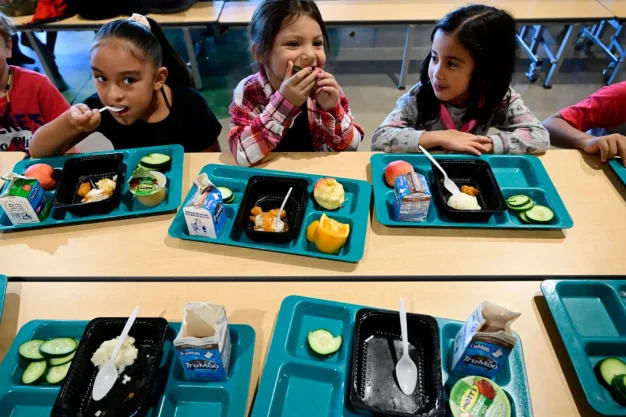
Summer meals, funding for high-poverty schools: What the US federal spending bill means for students
A new bipartisan US federal spending bill could send more money to schools serving students from low-income families and increase access to summer meals.
The bill, unveiled on Tuesday 20 December, includes tens of billions of dollars committed to schools, student support programs, and college funding. Among the bill’s provisions are additional investments in programs that support English language learners, child care for student parents, rural education, as well as increased funding for historically Black colleges and universities and other historically under-resourced higher education institutions.
Here’s a look at five ways it could affect students and families across the nation:
The bill makes permanent a pandemic-era Summer EBT program that provides families with grocery benefits in the months when schools are out of session. Under the program, families eligible for free or reduced-price school meals can receive $40 per child each month, says Julian Shen-Berro of Chalkbeat.
It also allows grab-and-go or delivery options for summer meals in rural areas, said Lisa Davis, who oversees the No Kid Hungry campaign at the nonprofit Share Our Strength. Eligible students can now take home up to 10 days’ worth of meals instead of being required to consume them at the meal sites, the nonprofit said.
The change would ease access in areas where it can be difficult for students to reach meal sites while parents are away at work, Davis added.
“Summer can be the hungriest time of year,” she said. “The whole school meals infrastructure goes away.”
But Davis said the permanent programs, while positive overall, will come at the cost of some pandemic relief programs being eliminated earlier or scaled back — like SNAP emergency allotments, which provided additional food stamp benefits amid the pandemic.
There is an element of robbing Peter to pay Paul that is very disappointing,” she said. “It’s tough, but I think the tradeoff is worth it.
The bill also increases the Pell grant maximum award by $500, or just over seven per cent to $7,395. It’s the largest increase to the federal grant program – which covers some college costs for students from low-income families – in more than a decade and higher than the $400 increase provided last year.
“The purchasing power of the Pell grant has dipped below 30 per cent of the cost of full-year public tuition and fees, and that is a trend that has really not been arrested over the past decade,” said Reid Setzer, director of government affairs at The Education Trust. “Trying to build that back up is a key approach in trying to make college more affordable.”
The bill increases Title I by five per cent, or $850 million – a slightly smaller jump than the six per cent boost that Congress provided last year, and significantly less than the tripling of Title I funding that President Joe Biden vowed on the campaign trail. The bill would see an allocation of nearly $18.4 billion to the program, which sends extra funds to high-poverty schools.
Setzer said they were pleased with the increases to the program, though noted The Education Trust had advocated for larger sums. “This is just building on what we have seen – a steady expansion,” he said.
Many of those schools have received hefty sums under the COVID relief packages that sent nearly $130 billion to the nation’s schools, but those funds are temporary and must be allocated by fall 2024.
“We know that there is a need, specifically for kids who are in Title I schools,” said Alicia Kielmovitch, a senior policy adviser at WestEd. “Any additional resources to help close that learning loss gap would be seen as a positive.”
The bill also removes language that blocks federal money from going toward transportation costs for school desegregation. Advocates and some lawmakers have spent years trying to eliminate the anti-busing rule, which Rep. Bobby Scott of Virginia has called “a relic of an ugly history” when school integration faced widespread resistance.
Recent bills have removed portions of the rule, and the latest act would scrap the last remnants of the restriction.
“I am proud of the bipartisan work to get rid of this language in order to give states and school districts room to advance voluntary initiatives to promote school diversity,” said House Appropriations Committee Chair Rep. Rosa DeLauro of Connecticut.
‘Any additional resources would be positive’
The bill adds more than $900 million in grants to support students with disabilities – a six per cent increase to reach just over $15 billion. Such programs provide services to millions of students across the nation.
The spending bill – expected to pass this week – comes in the waning days of the 117th Congress, as seats will soon change hands and Republicans prepare to take control of the House of Representatives.
“We’ve got a divided government again,” Setzer said. “That being said, there is baseline bipartisan support for many of the things we care about, including, I think, increases to Title I and Pell.”
Republished under Creative Commons Licensing courtesy of Chalkbeat, a nonprofit news site covering educational change in public schools. Julian Shen-Berro is a reporter covering national issues. Contact him at jshen-berro@chalkbeat.org.




